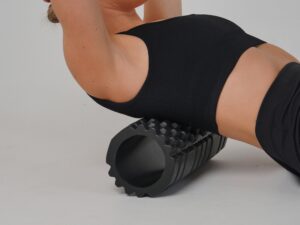
In the world of holistic health and wellness, achieving balance and vitality is often about addressing the body’s natural rhythms and systems. One crucial but often overlooked system is the lymphatic system—a network of tissues and organs that help rid the body of toxins, waste, and other unwanted materials. Lymphatic drainage techniques are designed to stimulate the movement of lymph fluids, and are an essential part of wellness routines for those seeking to enhance their physical, mental, and emotional well-being.
Understanding the Lymphatic System
The lymphatic system plays a key role in supporting the immune system, detoxifying the body, and maintaining fluid balance. Unlike the circulatory system, which relies on the heart to pump blood, the lymphatic system has no central pump. It relies on the natural movements of the body to move lymph fluid through vessels and lymph nodes. When this fluid stagnates due to illness, sedentary lifestyles, or stress, it can lead to a build-up of toxins, weakened immunity, and inflammation. Lymphatic drainage helps counteract these effects by manually encouraging the flow of lymph fluid, improving overall health.

The Physical Benefits of Lymphatic Drainage
- Detoxification: One of the primary benefits of lymphatic drainage is its ability to enhance the body’s natural detoxification processes. By stimulating lymphatic circulation, toxins and waste products are more efficiently flushed out of the body. This can lead to clearer skin, reduced bloating, and a general feeling of lightness and well-being.
- Boosting Immunity: The lymphatic system is a key component of the immune system, producing and transporting lymphocytes (white blood cells) to help fight off infections and diseases. Regular lymphatic drainage supports the immune response by ensuring that lymph fluid flows freely, reducing the chances of blockages that can impair immune function.
- Reducing Inflammation and Swelling: Lymphatic drainage has been shown to reduce inflammation and swelling, particularly in conditions like lymphedema, where lymph fluid accumulates in tissues. Whether caused by surgery, injury, or certain medical conditions, this technique can help alleviate discomfort by improving lymphatic circulation and reducing fluid retention.
- Improved Skin Health: Lymphatic drainage can also have a visible impact on the skin. By increasing blood circulation and promoting the removal of toxins, the skin is nourished from within. This leads to a reduction in puffiness, acne, and signs of premature aging. Many people experience a rejuvenated, radiant complexion after lymphatic drainage treatments.
The Benefits to Emotional and Mental Wellbeing
- Stress Relief: The gentle, rhythmic nature of lymphatic drainage massage also provides deep relaxation. This release of tension not only helps the body but also the mind. Many people report feeling calm, centred, and more in tune with their emotions following a session, making lymphatic drainage an excellent tool for stress management.
- Mental Clarity: When the body is overwhelmed with toxins, it can also affect mental clarity and focus. The detoxifying effects of lymphatic drainage can lead to improved cognitive function, clearer thinking, and a reduction in brain fog.
- Emotional Balance: Holistic wellbeing embraces the mind-body connection, recognising that physical detoxification can have emotional benefits as well. As lymphatic drainage helps to cleanse the body, it may also contribute to emotional cleansing, promoting feelings of lightness and positivity.
- Hormonal balance: A healthy lymphatic system allows progesterone to flow freely, which balances oestrogen levels. When the lymphatic system malfunctions, excess oestrogen can build up. This is especially important for women going through peri menopause and menopause as the way the body naturally produces these hormones changes. (this affects both physical and mental wellbeing).
For those seeking a balanced, holistic approach to wellness, lymphatic drainage complements other healing modalities such as yoga, meditation, and nutritional therapy. By focusing on the body’s natural processes, this therapy supports overall vitality and aligns with the principles of self-care and prevention that are at the heart of holistic health.

How To -Effective Lymphatic Drainage Practices for Overall Health and Wellbeing
Lymphatic drainage techniques can be incorporated into your daily routine to boost lymph flow, support detoxification, and promote overall wellness. Here are some effective practices to help stimulate the lymphatic system:
- Dry Brushing
Dry brushing is a simple technique that involves using a natural bristle brush on dry skin to stimulate lymphatic flow.

– How to Do It:
– Use long, sweeping strokes, always brushing toward the heart to encourage lymph movement.
– Start at the feet and work your way up the legs, arms, and torso.
– Brush in circular motions around the abdomen and joints.
– Best done before showering in the morning for a refreshing boost to the lymphatic system.
– Benefits: Promotes detoxification, exfoliates skin, and improves circulation.
- Lymphatic Drainage Massage
Lymphatic drainage massage is a specialised massage technique that encourages the natural drainage of lymph.

– How to Do It:
– It’s best to have this massage performed by a trained therapist who understands the body’s lymphatic system.
– The massage involves light, rhythmic strokes that follow the path of lymph vessels and nodes.
– Some therapists may also use cupping or other tools to enhance drainage.
– Abhyanga massage – an Ayurvedic technique that can be done yourself, it involves massaging the entire body, in the direction of the arterial blood flow with circular motion over the joints. It is practiced with warm, herb-infused oil, ideally first thing in the morning (if you would like a client information sheet on this do let me know and I will be happy to send it to you).
– Benefits: Reduces swelling, enhances immune function, and supports detoxification.
- Deep Breathing Exercises
The act of deep breathing creates a pressure change in the chest, which stimulates the flow of lymphatic fluid.

– How to Do It:
– Practice deep diaphragmatic breathing. Inhale deeply through the nose, filling your lungs from the bottom up, and exhale slowly through the mouth.
– Perform this exercise several times a day to keep lymph fluid moving efficiently.
– Benefits: Reduces stress, boosts lymph flow, and oxygenates the blood.
- Hydration
Adequate hydration is essential for keeping lymph fluid thin and flowing properly.

– How to Do It:
– Drink plenty of water throughout the day, aiming for at least 8 glasses (or more, depending on your activity level).
– Herbal teas, coconut water, and water-rich foods like fruits and vegetables also help keep you hydrated.
– Benefits: Supports overall lymphatic health by keeping the fluid system moving smoothly.
- Rebounding (Mini Trampoline)
Jumping on a mini trampoline, or “rebounding,” is an excellent way to stimulate the lymphatic system.

– How to Do It:
– Gently bounce on the trampoline for 10–15 minutes daily.
– The up-and-down motion creates a gravitational pull that stimulates the lymphatic system.
– Benefits: Increases circulation, strengthens muscles, and enhances lymph flow, making it a fun and effective way to support overall health.
- Gentle Yoga and Stretching
Certain yoga poses and stretches can encourage lymphatic flow, especially when combined with deep breathing.

– How to Do It:
– Focus on poses that involve gentle inversions, such as legs-up-the-wall (Viparita Karani) and downward-facing dog (Adho Mukha Svanasana), as they help drain lymph from the lower body. Surya Namaskar (sun salutations) are a series of yoga asanas, which involve the entire body and help increase circulation, energy and support lymphatic drainage.
– Twisting poses can also stimulate lymph flow in the torso by gently compressing and releasing lymph nodes.
– Benefits: Reduces stagnation, promotes detoxification, and supports overall lymphatic circulation.
- Contrast Showers
Alternating between hot and cold water in the shower can stimulate lymphatic circulation by causing blood vessels to dilate and contract.

– How to Do It:
– Start with 2–3 minutes of warm water, followed by 30 seconds of cold water.
– Repeat this process for 5–7 cycles, always finishing with cold water.
– Benefits: Boosts circulation, strengthens the immune system, and encourages lymph flow.
- Foam Rolling
Using a foam roller can help stimulate the lymphatic system, especially when focusing on areas around the lymph nodes like the armpits and groin.

– How to Do It:
– Gently roll over tight or congested areas, applying light pressure to stimulate lymph flow.
– Avoid pressing too hard, as this can restrict lymphatic drainage.
– Benefits: Enhances mobility, reduces muscle tension, and promotes detoxification.
- Walking or Gentle Exercise
Regular movement is essential for keeping the lymphatic system active, as lymph relies on muscle contractions to move.

– How to Do It:
– Aim for at least 30 minutes of walking, swimming, or other low-impact exercises daily.
– Incorporate stretching and gentle movements into your day, even if it’s just a few minutes of walking around the house, doing a few repetitions of squats, star jumps, lifting dumbbells for example.
– Benefits: Improves circulation, supports detoxification, and promotes healthy lymphatic flow.
- Healthy Diet for Lymphatic Support
Eating nutrient-rich, anti-inflammatory foods can support lymphatic health by reducing the body’s toxic load.

– How to Do It:
– Focus on whole foods such as leafy greens, citrus fruits, garlic, ginger, turmeric, and berries, which promote lymph flow.
– Avoid processed foods, sugar, and alcohol, as these can contribute to lymphatic congestion.
– Benefits: Enhances detoxification, reduces inflammation, and supports overall lymphatic health.

Incorporating lymphatic drainage into your wellness routine can unlock a host of physical, mental, and emotional benefits. By supporting the body’s natural detoxification and immune functions, reducing stress, and improving overall vitality, this therapy aligns beautifully with the goals of holistic wellbeing. It offers a gentle yet profound way to nurture your body and mind, helping you feel balanced, energised, and refreshed from the inside out.
Holistic wellbeing isn’t just about treating symptoms—it’s about fostering harmony within the body. Lymphatic drainage, as a holistic therapy, is an essential tool for anyone looking to take a proactive and integrated approach to their health and wellness.
If you found this article interesting, informative or have any questions, we would love to hear from you please leave a comment below!
